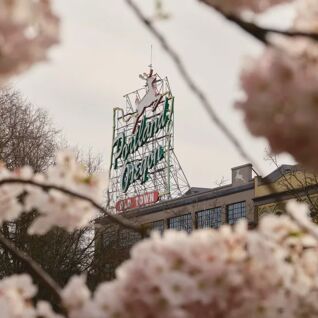
A new exhibit at New York’s Museum of Modern Art highlights the work of modern artists Jasper Johns and Robert Rauschenberg—but one critic claims “Johns and Rauschenberg” is closeting the queer artists, who were lovers during the period of collaboration the show covers.
Slate.com’s Mark Joseph Stern reports that “Johns and Rauschenberg” ignores the art pioneers intimate relationship, even though it had a profound effect on their art:
The painting contains one of Johns’ famous Americans flags reversed and coated in thick, dark paint, occluding the iconic image with gloomy tones. Johns painted his first American flag soon after meeting Rauschenberg, and completed In Memory during their break-up. Accordingly, the piece is often interpreted as an illustration of a relationship tarnished, smothered, and increasingly obscured by the passage of time.
While those two works are not on display in “Johns and Rauschenberg,” several of the installation’s paintings could be rewardingly subjected to similar analysis. MoMA gives us no such gifts, though, skating over the true nature of the two men’s relationship and, at one point, actively denying it, really, by referring to Johns as Rauschenberg’s “friend.”
…Even a brief reference to the artists’ sexuality could clue savvy viewers into keener investigation of these droll, elliptical works—or, even better, complete the installation’s narrative. MoMA tells us that Johns’ and Rauschenberg’s collaboration led them away from abstract expressionism, but it fails to explain how they discovered Pop Art. That genre, birthed by these two a
rtistic giants, was built upon rejection of societal norms including hyper-masculinity and heternormativity.
Its gay dimension was present from its genesis, yet a casual visitor to “Johns and Rauschenberg” might think Pop Art merely sprung out of two buddies’ wacky experiments.


















